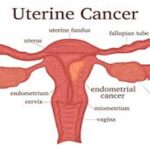World TB Day, falling on March 24th each year, is organized to increase awareness among the general public that Tuberculosis continues to be a significant public health problem in much of the world today.
India
healthysoch
Chandigarh, March 23, 2023:
It commemorates the day in 1882 when Dr. Robert Koch announced in Berlin that he had discovered the cause of tuberculosis, the TB bacillus. At that time, TB was rampant in Europe and the Americas, causing the death of one in every seven individuals.
The Stop TB Partnership, an entity of the United Nations and The World Health Organization (WHO) have announced the theme for this year’s World TB Day: “Yes! We Can End TB”.
 Even in recent times, TB continues to be a public health scourge globally. In 2021, an estimated 10.6 million people fell ill with TB around the world. This was an increase of 4.5% as compared to 2020. Eight countries accounted for two- thirds of the total global burden of the disease, with India accounting for more than a quarter of the global burden. The other seven countries (in decreasing order of prevalence) are China, Indonesia, Philippines, Pakistan, Nigeria, Bangladesh and South Africa. To put things in perspective: India has less than 20 percent of the world’s population, but has more than 25 percent of the total TB patients of the world. Worldwide, India has the highest burden of Drug Resistant TB also.
Even in recent times, TB continues to be a public health scourge globally. In 2021, an estimated 10.6 million people fell ill with TB around the world. This was an increase of 4.5% as compared to 2020. Eight countries accounted for two- thirds of the total global burden of the disease, with India accounting for more than a quarter of the global burden. The other seven countries (in decreasing order of prevalence) are China, Indonesia, Philippines, Pakistan, Nigeria, Bangladesh and South Africa. To put things in perspective: India has less than 20 percent of the world’s population, but has more than 25 percent of the total TB patients of the world. Worldwide, India has the highest burden of Drug Resistant TB also.
The ‘National TB Prevalence’ survey (2019- 2021) in India, conducted by the Union government is a three year survey that was the first of its kind nationwide in the last 55 years, and is only the second national survey aimed at determining the actual disease burden of tuberculosis in the country.
The survey revealed that the prevalence of tuberculosis among Indians aged above 15 years is 312 cases per 1 lakh population, as compared to the global average of 134 cases per 1 lakh population. Delhi, with 747 cases per 1 lakh population, has the highest prevalence of TB. Gujarat has the lowest prevalence with 137 cases per 1 lakh population. The survey has estimated the National Prevalence to Notification Ratio as 2.84. (this means that for every case that is notified, the actual prevalence of cases in the community is 2.84). The study has also estimated that in over 60% of cases, the patients did not seek medical care for their symptoms, the most common reasons for this being that either the symptoms were ignored by the patients, the symptoms were not recognized by the patients as being indicative of an underlying disease or due to financial constraints in seeking medical care.
John Bunyan, once referred to “Consumption” as the “Captain of the Men of Death” and indeed, for many years, and in many parts of the world, TB was the leading infectious cause of death. In 2021, there were an estimated 1.3 million deaths due to TB globally, with over 400,000 deaths occurring in India.
India has had a National TB Program (NTP) since 1962. Since then, it has been re-organized twice: first into the Revised National Tuberculosis Control Program (RNTCP) in 1997 and then into the National Tuberculosis Elimination program (NTEP) in 2020.
TB control efforts initially got organized with the National TB program (NTP) primarily focusing on BCG vaccinations as a preventive measure. In order to strengthen the NTP, the Government decided to give a new thrust to TB control activities, with assistance from international agencies and the emphasis was shifted to a treatment based strategy. The Revised National TB Control Programme (RNTCP), adopted the internationally recommended Directly Observed Treatment Short course (DOTS) strategy, as the most systematic and cost- effective approach for the Indian scenario.
Under DOTS, political and administrative commitment were some of its core strategies, to ensure the provision of organized and comprehensive TB control services. Adoption of smear microscopy for reliable and early diagnosis was introduced in the general health services. The supply chain of drugs was also strengthened to provide assured supply of drugs to meet the requirements.
Large-scale implementation of the RNTCP began in late 1998 and subsequently, India achieved country wide coverage under RNTCP in 2006. This was followed up with RNTCP Phase II, from 2006 onwards. The second phase aimed at atleast 70% case detection rate of new smear positive cases as well as a cure rate of atleast 85%, in order to achieve the TB- related targets set by the United Nations among the “Millenium Development Goals”. In terms of treatment of patients, RNTCP was recognized as the largest and the fastest expanding TB control programme in the world.
Consolidating the advancements in RNTCP , it was renamed as the NTEP and this change came into effect from 1 January 2020. “Ni-Kshay” (Ni- End, Kshay- TB), a web based patient management system for TB control has been another notable achievement and has enabled capture and transfer of individual patient data from the remotest health institutions of the country.
The President of India, Smt. Droupadi Murmu launched the “Pradhan Mantri TB Mukt Bharat Abhiyaan” on September 9, 2022. According to the United Nations “Sustainable Development Goals”, all nations have set the goal of eradicating TB by the year 2030. But the Government of India has set the target of eradicating TB by the year 2025 and efforts are being made at every level to fulfill this resolution. The “Pradhan Mantri TB Mukt Bharat Abhiyaan” has been envisioned to bring together all stakeholders to support those on TB treatment and accelerate the country’s progress towards TB elimination.
healthysoch







